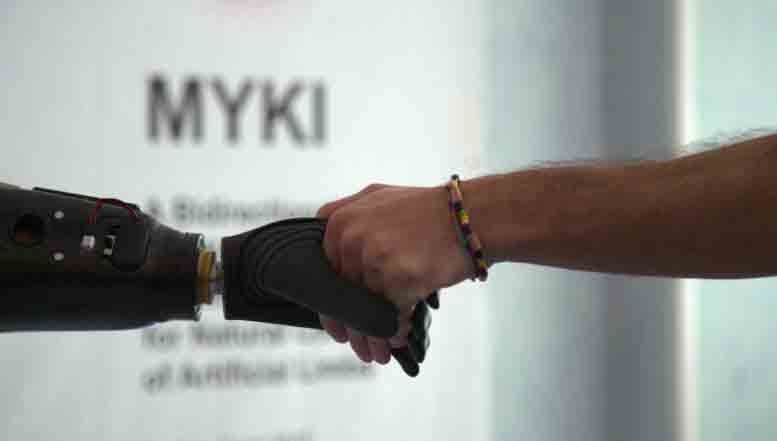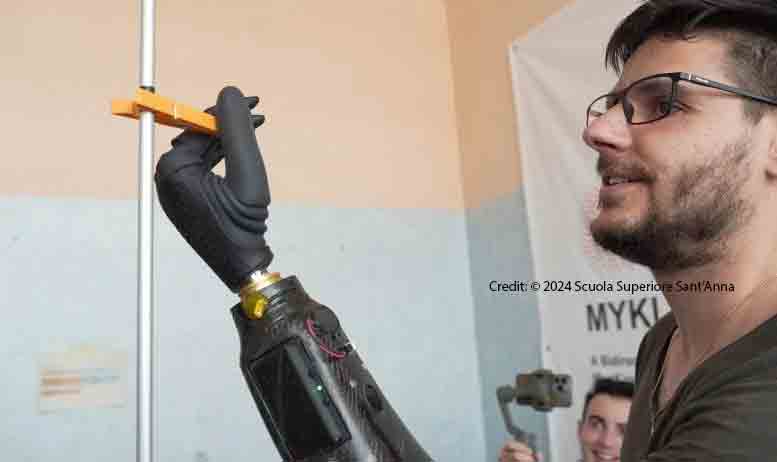Unleashing the Future: Revolutionary Magnetic Prosthetic Hand Transforms Lives!
magnetic prosthetic hand natural control
New Magnetic Prosthetic Hand Offers Natural Control for Amputees
Revolutionary Magnetic Prosthetic Hand Developed by BioRobotics Institut
The BioRobotics Institute has unveiled a groundbreaking magnetic prosthetic hand that enables users to achieve natural and precise control over robotic fingers, a feat successfully validated through patient trials. This pioneering technology allows amputees to replicate all hand movements simply by using their thoughts, eliminating the need for wires or electrical connections. Instead, the system leverages magnets and muscular contractions to facilitate essential tasks such as opening jars, shaking hands, and holding glasses.
Advancements in Prosthetic Interfaces
A research team from the BioRobotics Institute at Scuola Superiore Sant’Anna in Pisa has created an innovative interface that bridges the gap between an amputee’s residual limb and the robotic hand, effectively decoding motor intentions. This sophisticated system requires the implantation of small magnets within the forearm’s muscles. The implant, integrated with the Mia-Hand robotic hand designed by the spin-off company Prensilia, was put to the test on its first patient, a 34-year-old Italian named Daniel, who utilized the prosthesis for six weeks. The findings from this trial, published in the journal Science Robotics, mark a substantial advancement in prosthetic technology.

“This achievement is the culmination of decades of dedicated research. We have finally created a functional prosthesis that fulfills the needs of individuals who have lost a hand,” states Prof. Christian Cipriani, the leading researcher from the BioRobotics Institute.
Exploring Myokinetic Control
The concept of myokinetic control—decoding motor intentions through implantable magnets in muscles—represents a frontier in prosthetic technology, explored by the Scuola Superiore Sant’Anna research team. The innovative interface, developed as part of the MYKI project and funded by the European Commission via an ERC Starting Grant, utilizes small magnets implanted within the residual muscles of the amputated limb to manipulate the robotic fingers.
“There are 20 muscles in the forearm, many of which govern hand movements. Individuals who have lost a hand often retain a sense of its presence, as the residual muscles respond to signals from the brain,” Cipriani elaborates.
The team meticulously mapped these movements and translated them into actionable signals for the robotic hand. The magnets, possessing a natural magnetic field, are easily locatable in space. As the muscles contract, the magnets shift, and a specialized algorithm converts this movement into specific commands for the robotic hand.
magnetic prosthetic hand natural control: Success in Initial Human Trials
Daniel, who lost his left hand in September 2022, participated in the trial due to his persistent sensation of his hand’s presence and the responsiveness of his residual muscles to his intentions. In April 2023, he underwent surgery to implant magnets into his arm at the Azienda Ospedaliero-Universitaria Pisana (AOUP), facilitated by a collaborative team led by Dr. Lorenzo Andreani, alongside Dr. Manuela Nicastro and Dr. Carmelo Chisari.
“This marks a significant milestone in advanced prosthetic medicine,” Dr. Andreani remarks. “The surgery’s success hinged on a rigorous patient selection process based on stringent criteria. One of the challenges was pinpointing the residual muscles in the amputation area, achieved through preoperative MRI and electromyography. Nonetheless, the actual condition of the tissue, influenced by scarring and fibrosis, necessitated intraoperative adjustments.”
“Despite the obstacles,” he continues, “we successfully completed the implant and established the necessary connections—an achievement that would not have been possible without the outstanding collaboration of our team, from Dr. Nicastro to the dedicated nursing staff, all of whom contributed to the operation’s positive outcome.”
In total, six magnets were implanted in Daniel’s arm. For each magnet, the surgical team identified and isolated the corresponding muscle, placed the magnet, and ensured that its magnetic field orientation was consistent.
“To facilitate the connection between the residual limb and the robotic hand, we designed a carbon fiber prosthetic socket equipped with the electronic system capable of detecting magnet movements,” Cipriani explains.
The outcomes of this experiment exceeded all expectations. Daniel was able to control his finger movements, manipulate various objects, and perform everyday tasks such as opening jars, using tools, cutting, and zipping clothing, all while regulating the pressure applied to delicate items.
“This system has allowed me to regain sensations and emotions I thought lost: it feels as if I am moving my own hand,” Daniel expresses.
“Experiencing the culmination of years of research manifest in this study was profoundly moving. Collaborating with Daniel has reinforced our belief that we can significantly enhance his quality of life, as well as that of countless others. This motivates us to continue striving for improvement,” remarks Marta Gherardini, an assistant professor at Scuola Superiore Sant’Anna and the lead author of the study.
Future Prospects and Implications
“We are poised to extend these findings to a wider range of amputations,” Cipriani concludes. “Our efforts on this new implant are progressing with support from European and national funding, including the MYTI project backed by the European Research Council, which aims to facilitate the clinical application of our developed interface, alongside the Fit For Medical Robotics initiative funded by the Ministry of University and Research, as well as our ongoing collaborations with INAIL Centro Protesi.”
Reference:
“Restoration of grasping in an upper limb amputee using the myokinetic prosthesis with implanted magnets” by Marta Gherardini et al., 11 September 2024, Science Robotics. DOI: 10.1126/scirobotics.adp3260.







